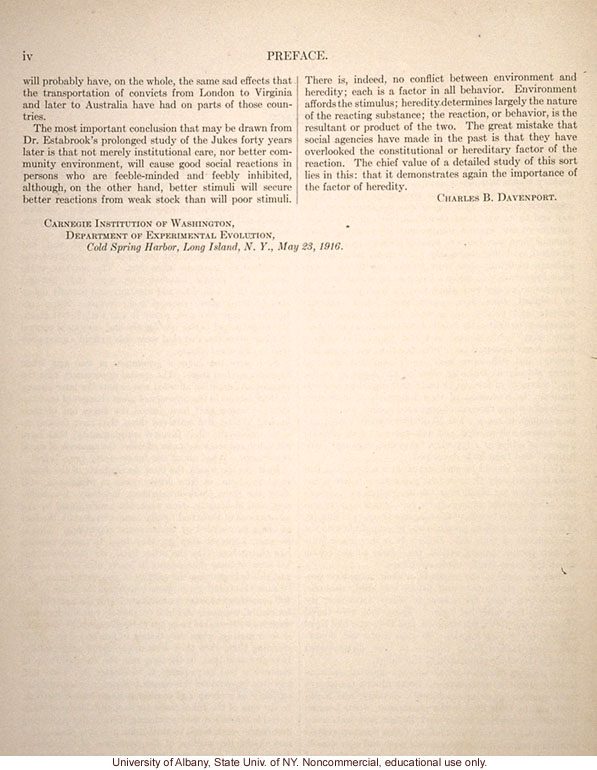iv PREFACE.
will probably have, on the whole, the same sad effects that the transportation of convicts from London to Virginia and later to Australia have had on parts of those countries.
The most important conclusion that may be drawn from Dr. Estabrook's prolonged study of the Jukes forty years later is that not merely institutional care, nor better community environment, will cause good social reactions in persons who are feeble-minded and feebly inhibited, although, on the other hand, better stimuli will secure better reactions from weak stock than will poor stimuli. There is, indeed, no conflict between environment and heredity; each is a factor in all behavior. Environment affords the stimulus; heredity determines largely the nature of the reacting substance; the reaction, or behavior, is the resultant or product of the two. The great mistake that social agencies have made in the past is that they have overlooked the constitutional or hereditary factor of the reaction. The chief value of a detailed study of this sort lies in this: that it demonstrates again the importance of the factor of heredity.
Charles B. Davenport.
Carnegie Institute of Washington.
Department of Experimental Evolution,
Cold Spring Harbor, Long Island, N.Y., May 23, 1916.


